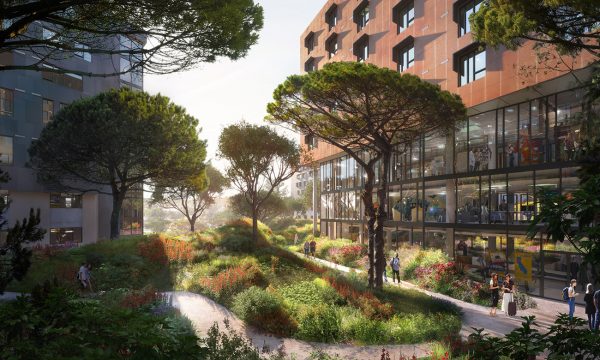Date Posted: 12.09.2019
The Pacific Northwest has a legacy of leadership in technology, with a strong economy driven by a growing number of innovative employers in aerospace, technology, biotech and related industries.
National rankings place Washington No. 2 in the concentration of science, technology, engineering and math (STEM) employment opportunities, but the percentage of our state’s graduates earning degrees in STEM fields is too low to meet this workforce demand.
The shortfall in STEM workforce candidates is compounded by underrepresentation of minority students earning post-secondary science, technology or math degrees. Although more first-generation and underserved minority students are entering colleges and pursuing STEM majors, recent statistics indicate that only 29 percent of Latinx students, 25 percent of Native American students and 22 percent of African American students complete a STEM degree within six years. In 2017, women represented only 22 percent of students earning associate or bachelor’s degrees in computer science. How can we better support the success of these trailblazing students who are essential to the economic vitality of our region?
West Coast colleges and universities are finding promising strategies to make STEM learning appeal to a wider spectrum of students and achieve improving rates of degree and certificate completions. A key element is the linkage of programs across academic departments and student affairs to cultivate a robust and holistic support network that students can rely on as they encounter challenges. In addition, expanding connections between faculty and students outside the classroom helps activate mentorship opportunities, cultivate a sense of belonging and open the door to non-traditional degree paths.
Real magic happens when this stronger cooperation between academic and student affairs is coupled together with flexible environments for interdisciplinary exploration.
One highly visible example is the explosion of new maker and innovation spaces on campus, both as part of academic departments and within student life centers. These hands-on creation and collaboration spaces offer physical and digital design tools that introduce STEM learning to new audiences that might not otherwise consider traditional STEM degree paths. When co-located with casual group study spaces and tutoring or student affairs programming, these innovation spaces open the door to STEM careers and catalyze out-of-the-box thinking.
STUDENT-CENTERED HUB
This strategy is fundamental to Seattle University’s new Center for Science and Innovation (CSI), which not only provides exceptional teaching and research laboratory spaces that connect science faculty with their students, but also creates a new student life center on the campus.
Situated on a key gateway site at the east edge of campus, the new CSI facility co-locates teaching, research and administrative program space with community gathering spaces, a new café, the campus radio station and, centrally, a maker innovation laboratory on the ground floor that has full transparency to the campus and city.
This new landmark facility seeks to break down academic silos in sciences and engineering, and to make STEM relevant to the entire student population by placing the disciplines within a welcoming, student-centered hub for social gathering and events. The staffed innovation lab is an interdisciplinary and inclusive environment that encourages curiosity and exploration among all students, with the expressed goal to activate more diverse student engagement with the sciences.
The new CSI also will host events and create opportunities for regional technology partners to engage with faculty and students as they explore career pathways. This symbiotic relationship between institution and industry benefits the university and its students and is a vital connection between industry leaders and the next generation’s innovators.

LEARNING AND LIVING
This thread of interconnected program use linking academic and social communities is also expanding in student life facilities. Colleges and universities have long recognized the direct correlation of on-campus residential life with academic success. A more recent trend is the direct infusion of academic and academic support spaces into residential living and learning facilities.
The University of Washington’s recent West Campus and North Campus student life facilities have been coupled with new maker spaces that complement more traditional student amenity spaces. Area 01 at Maple Hall, for example, has recorded an average of 180,000 annual users, and its Dabble Lab maker space has increased the number of 3D printers from two to 15 in recent years to keep up with burgeoning student demand. The success of this space has led to expanded programming for maker laboratories in other areas of main campus.

CENTER OF GRAVITY
UCLA is creating a dynamic three-story, 10,000-square-foot study commons and maker laboratory as the nucleus of a new 1,800-student residential complex at Olympic and Centennial Residence Halls (originally called Lot 15) on the campus’s west edge.
This transparent maker lab is showcased at the most public level of Olympic Hall to invite and inspire student and faculty collaboration. The building also features a new multipurpose incubator space that enables regional tech industries to come on campus and work directly with students as a part of the innovation lab program.
This purposeful integration makes Olympic and Centennial Halls a new center of gravity on UCLA’s dense urban campus despite its remote location along a campus edge with difficult topography. The STEM-focused maker lab will draw thousands of students to this distant precinct of campus and help ensure that the residential community is an active destination, not an outpost. This synergy between living and learning repeats itself on many campuses in different combinations and consistently yields high levels of student demand and use.
The future success and prosperity of our region is dependent on integrated solutions borne from diverse backgrounds and disciplines working together. STEM-focused maker and innovation resources on higher education campuses play a crucial role in setting the stage for this collaboration and innovation mindset.
These maker spaces are accessible to increasingly diverse student populations and offer non-threatening, inclusive environments where engagement with STEM thinking can advance different styles of learning and directly translate to social connection and academic success. When curiosity is paired with the right tools and support, new pathways emerge.
This article first appeared in the Daily Journal of Commerce.